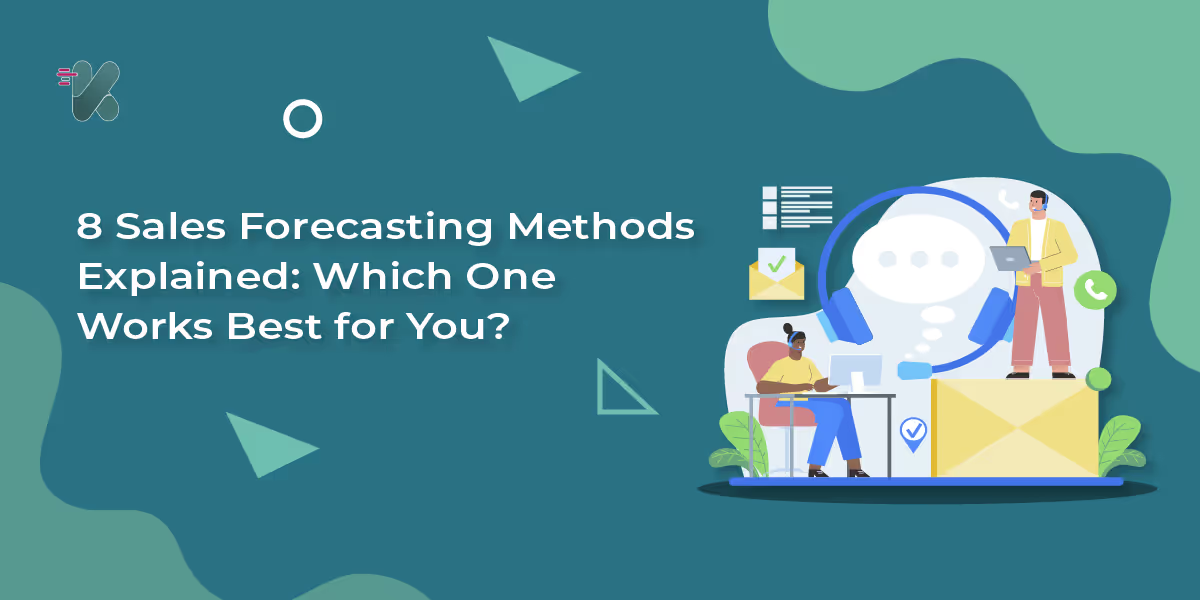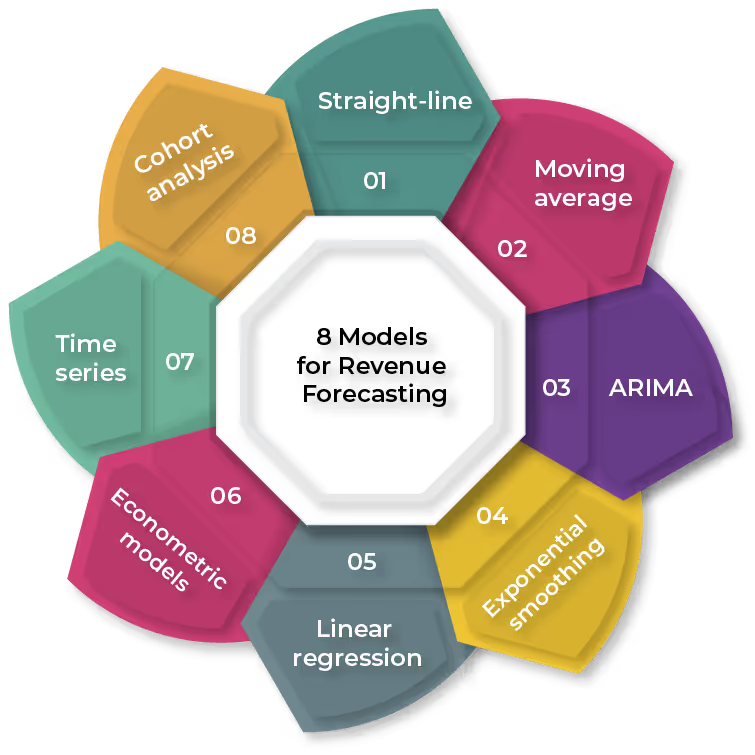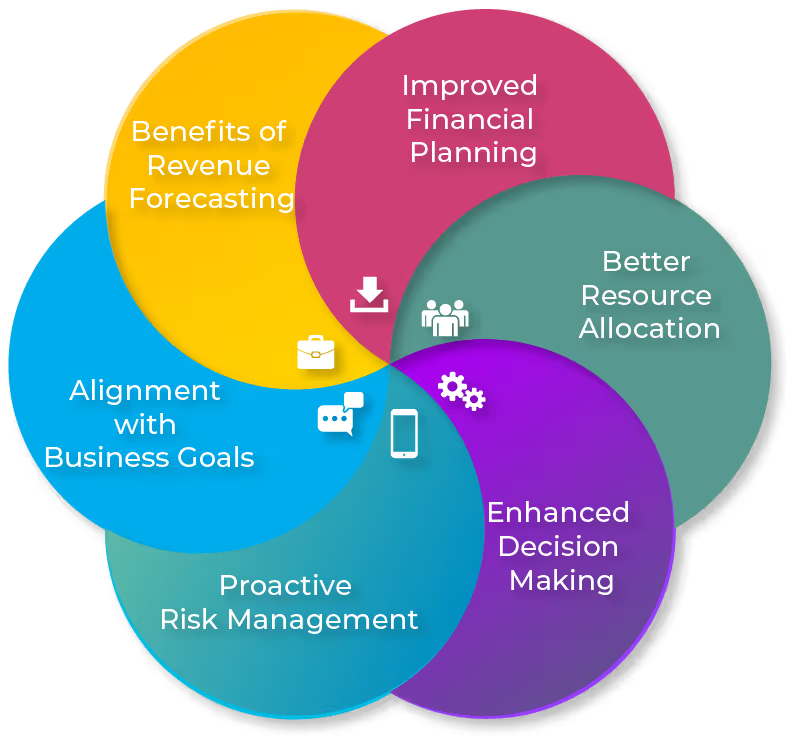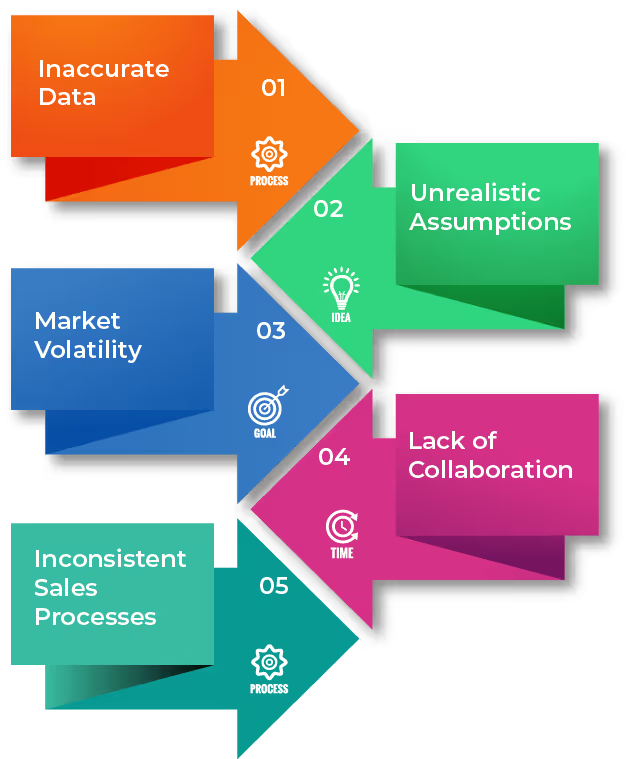
Blog
8 Sales Forecasting Methods Every Business Should Explore
November 19, 2024


Key Insights
8 Sales Forecasting Methods Explained: Which One Works Best for You?
Sales forecasting is like a compass for your business. It helps you navigate the unknowns of future revenue, giving you direction and clarity to make smarter decisions. Whether you’re a small business owner or managing a large team, understanding and implementing effective sales forecasting models can drastically improve your financial planning, resource allocation, and overall strategy.
In this blog, we’ll walk you through the ins and outs of sales forecasting, exploring various models, their benefits, challenges, and how to choose the right one for your business needs. Let’s dive in!
What Is Sales Forecasting?
At its core, sales forecasting is the process of estimating future sales revenue based on historical data, trends, and various factors that may impact your business. Here you rely on data and analytics to predict where your sales will be in the upcoming months or years.
Sales forecasting helps businesses anticipate demand, set realistic targets, manage cash flow, and even allocate resources more effectively. By using forecasting, companies can stay ahead of market trends and make informed decisions.
Why Sales Forecasting Matters
A study by Dooly revealed that 68% of companies experience inaccurate sales forecasts, leading to potential misallocations of resources and missed revenue opportunities.
By predicting future sales, you gain a clear picture of where your company is headed and can make smarter decisions along the way. t helps ensure you’re not caught off guard by market fluctuations or internal challenges, and most importantly, it allows your team to align with well-defined, realistic goals.
- Strategic Planning:
Accurate sales forecasts give businesses a solid foundation to plan and implement long-term strategies. Whether you're deciding on new product launches, marketing campaigns, or hiring additional salespeople, forecasting is crucial for making those decisions.
- Financial Management:
With better insight into future sales, companies can more effectively plan for their financial needs, from cash flow to investment strategies.
- Risk Management:
Sales forecasting allows businesses to spot potential slowdowns in revenue before they occur, helping teams proactively address challenges like market shifts or seasonal fluctuations.
- Setting Realistic Goals
Sales teams that rely on forecasting can set achievable targets, which is essential for maintaining motivation and morale.
8 Models for Revenue Forecasting
There’s no one-size-fits-all approach when it comes to sales forecasting. Different businesses and industries require different models.

Here are 8 popular models that can help you make more accurate predictions:
- Straight-Line Forecasting:
This simple model assumes that future sales will follow the same trend as past performance. It works best in stable environments where sales growth is consistent year over year.
- Moving Average:
This model averages a set of recent sales data to smooth out short-term fluctuations. It’s perfect for businesses experiencing moderate growth or consistent sales patterns.
- Linear Regression:
This statistical method analyzes the relationship between sales and one or more variables (like marketing spend or economic factors). It helps businesses predict future sales based on established trends.
- Time Series:
Time series forecasting uses historical sales data over regular intervals to predict future sales. It works well for businesses with recurring sales patterns, such as seasonality.
- ARIMA (AutoRegressive Integrated Moving Average):
This complex model blends moving averages, past trends, and differencing techniques to predict future sales more precisely. ARIMA is ideal for businesses with irregular or non-linear sales trends.
- Exponential Smoothing:
This model gives more weight to recent sales data, making it useful for businesses that experience frequent shifts in sales patterns. It’s more responsive to changes and short-term trends.
- Econometric Models:
These models use multiple economic variables (like consumer behavior, market demand, and competitive actions) to predict sales. They are often employed by larger companies in industries with strong external influences.

- Cohort Analysis:
This model segments customers based on specific behaviors or characteristics and tracks their sales over time. It provides insights into how different groups of customers contribute to overall revenue, helping you identify high-performing segments.
💡Curious to know about how AI can be used for sales forecasting? Check out our blog: Unlocking Business Success with AI Sales Forecasting
How Can You Choose the Right Forecasting Model?
Selecting the right forecasting model hinges on understanding your business’s unique needs and available data. For instance, if you have a strong history of sales data, models like Time Series or Linear Regression can provide clear insights based on past performance. These models excel in environments where patterns repeat, making them ideal for businesses with consistent sales trends.
On the other hand, if your company is experiencing rapid growth or is more unpredictable, you may need models that can adapt to change, like Cohort Analysis or Moving Average, which provide flexibility in forecasting under fluctuating conditions.
External factors such as economic shifts, market trends, and seasonality can also play a huge role in choosing the right model. If your business is influenced by external variables, models like Econometric or ARIMA can help account for these influences by integrating relevant data outside of your internal sales history. No single model fits all businesses, so it's important to experiment with different approaches, test your results, and refine your forecasting methods as your company grows and the market landscape evolves.
What Are the Right Tools to Use?
Nearly 79% of sales organizations miss their forecasts by over 10%, highlighting the inherent challenges of accurate prediction, but with the right tools and strategies, achieving precision becomes much easier.
While Excel spreadsheets might work for simple models, investing in advanced forecasting software can make a huge difference in both accuracy and efficiency. Popular forecasting tools include:
- Salesforce: Known for its robust CRM capabilities, Salesforce also offers sales forecasting features to help you track revenue and sales pipelines.
- HubSpot Sales Hub: HubSpot’s forecasting tool helps you predict future sales based on your pipeline and historical data. PandaDoc: Offers a revenue forecasting tool that integrates with CRM software for more accurate projections.
💡Pro-tip: While forecasting tools help you predict revenue and sales trends, don't forget to factor in sales incentives when planning your forecasts. This is where Kennect can help. Kennect’s Incentive Compensation Management platform ensures that your sales team’s performance is aligned with your forecasting goals by automating the calculation of commissions and bonuses.
By integrating this tool into your sales strategy, you can more accurately predict the impact of incentives on revenue and motivate your team to meet their targets. This adds an extra layer of accuracy to your forecasts, especially in commission-driven environments.
Benefits of Revenue Forecasting

- Improved Financial Planning:
Sales forecasts provide the groundwork for budgeting and financial planning, ensuring that your resources are allocated in the most effective way.
- Better Resource Allocation:
When you have a clear idea of your expected revenue, it’s easier to allocate resources like manpower, inventory, and marketing budgets to meet your goals.
- Enhanced Decision-Making:
With a data-driven forecast in hand, management can make decisions based on facts rather than guesswork, increasing the likelihood of success.
- Proactive Risk Management:
By spotting potential dips or fluctuations in sales, forecasting allows you to act early, minimizing the impact of risks such as market shifts or supply chain issues.
- Alignment with Business Goals
Sales forecasts help ensure that sales targets and business goals are aligned, keeping teams focused on the bigger picture and on achieving growth.
Common Challenges in Sales Forecasting

Sales forecasting isn’t always a walk in the park. There are several hurdles that businesses often face:
- Inaccurate Data:
If the data you use to forecast isn’t reliable or up-to-date, your predictions will be off. Clean, accurate data is the backbone of any successful forecast.
- Unrealistic Assumptions:
Forecasting models rely on assumptions (like a steady increase in sales), but if those assumptions don’t match reality, the forecast will be flawed.
- Market Volatility:
External factors such as economic downturns, competitor actions, or even changes in consumer behavior can disrupt sales, making forecasts harder to predict.
- Lack of Collaboration
Sales forecasts are often more accurate when there’s a collaboration between different departments (marketing, finance, operations). Without input from all stakeholders, forecasts may lack crucial insights.
- Inconsistent Sales Processes
Without standardized sales processes, it’s challenging to generate consistent data, leading to less accurate forecasts. Establishing clear processes across the board helps improve forecast accuracy.
Conclusion
By failing to prepare, you are preparing to fail.”With the right forecast, you’re not just reacting to market shifts, you’re anticipating them.
So, don’t just forecast, own it. Experiment with models, refine your strategy and let your forecasts guide you toward smarter decisions and bigger wins. Your business’s future isn’t left to chance, it’s a map waiting for you to chart. Ready to create yours?
ReKennect : Stay ahead of the curve!
Subscribe to our bi-weekly newsletter packed with latest trends and insights on incentives.
Thank you! Your submission has been received!
Oops! Something went wrong while submitting the form.
Your data is in safe hands. Check out our Privacy policy for more info











